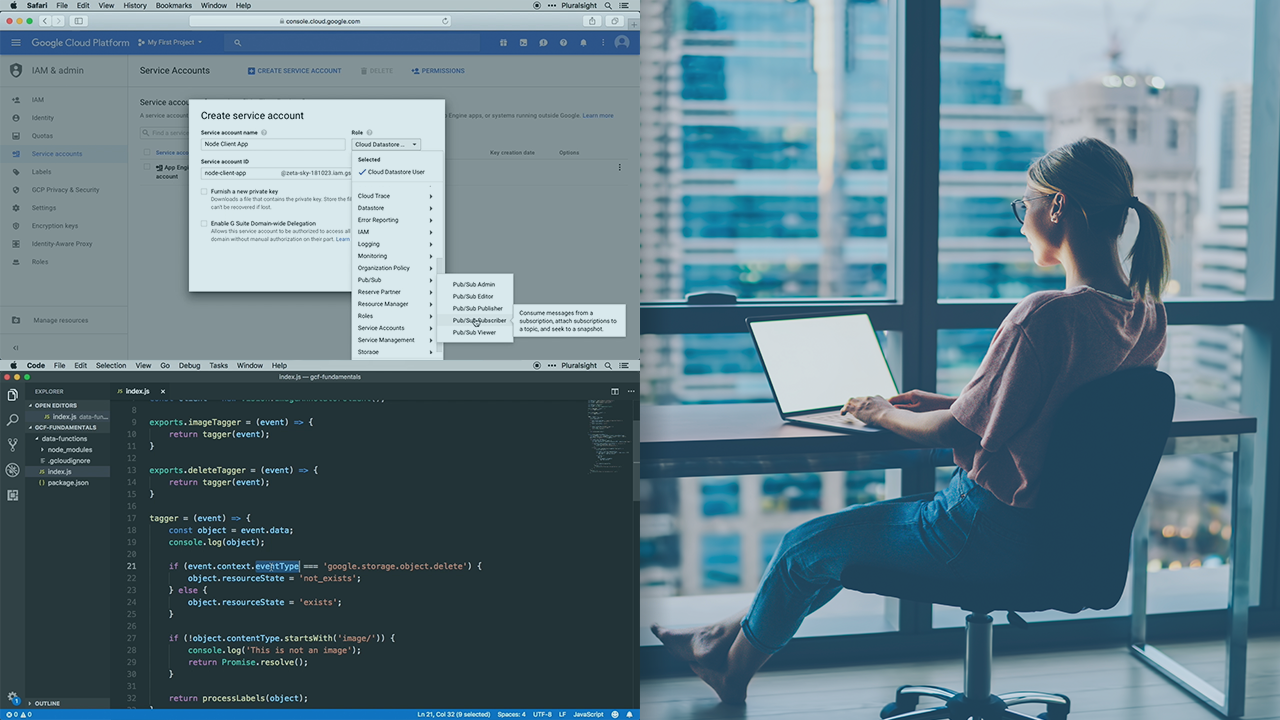- Course
Google Cloud Functions Fundamentals
In this course, you will traverse the Google Cloud Functions landscape so you can create high-quality microservices that will enhance the experience of your app or website, while avoiding the common traps associated with them.

- Course
Google Cloud Functions Fundamentals
In this course, you will traverse the Google Cloud Functions landscape so you can create high-quality microservices that will enhance the experience of your app or website, while avoiding the common traps associated with them.
Get started today
Access this course and other top-rated tech content with one of our business plans.
Try this course for free
Access this course and other top-rated tech content with one of our individual plans.
This course is included in the libraries shown below:
- Cloud
What you'll learn
Developers want to build serverless microservices so they can create new content, reduce maintenance, scale easily, and deliver new features to users faster. In this course, Google Cloud Functions Fundamentals, you will expand your serverless skills to create high-quality Microservices that will enhance the experience of your app or website. First, you will learn to build unique functions that interact with other Google Cloud services such as Cloud Vision and Cloud Datastore. Second, you will discover advanced concepts such as the function's file system, idempotent function design, and working through memory and timeout issues. Finally, you will explore how to properly log errors and set up monitoring for your functions so you can continue to monitor them once they are in production. When you’re finished with this course, you will have a high-level understanding of Google Cloud Functions that will allow you to create unique experiences for your customers.

